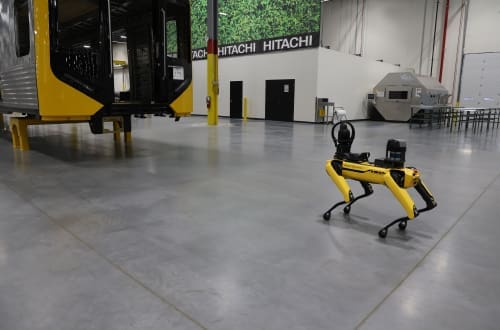- Services
Technology Capabilities
Technology Capabilities- Product Strategy & Experience DesignDefine software-driven value chains, create purposeful interactions, and develop new segments and offerings.
- Digital Business TransformationAdvance your digital transformation journey.
- Intelligence EngineeringLeverage data and AI to transform products, operations, and outcomes.
- Software Product EngineeringCreate high-value products faster with AI-powered and human-driven engineering.
- Technology ModernizationTackle technology modernization with approaches that reduce risk and maximize impact.
- Embedded Engineering & IT/OT TransformationDevelop embedded software and hardware. Build IoT and IT/OT solutions.
- Industries
- GlobalLogic VelocityAI
- Insights
BlogsDecember 16, 2024Gene LeybzonAccelerating Digital Transformation with Structured AI Outputs
This code produces the following output that can be imported into the candidate trackin...
 BlogsOctober 30, 2024Yuriy Yuzifovich
BlogsOctober 30, 2024Yuriy YuzifovichAccelerating Enterprise Value with AI
Discover how financial services integrations are transforming from standalone offerings...

- About Us
Press ReleaseGlobalLogicSeptember 23, 2025Hitachi agrees to acquire German data and AI services firm ...
Strengthening GlobalLogic’s data and consulting capabilities and expanding footprint in...
 Press ReleaseGlobalLogicSeptember 10, 2025
Press ReleaseGlobalLogicSeptember 10, 2025GlobalLogic and Ericsson Deploy Private 5G Network at Hitachi ...
The new infrastructure is the digital backbone of the Hagerstown plant, enhancing effic...

- Careers
Published on June 28, 2023Prompt Engineering for Generative AI Defined
View all articles Dr Maria AretoulakiLead Conversational & Generative AI DesignShareRelated Content
Dr Maria AretoulakiLead Conversational & Generative AI DesignShareRelated Content GlobalLogic18 December 2025
GlobalLogic18 December 2025 GlobalLogic3 December 2025View All Insights
GlobalLogic3 December 2025View All Insights GlobalLogic1 December 2025Recommended authorsDirector, Industrial BU GSPSenior Vice President & Head of EMEAView all authorsVice President & Consumer Business, Americas GlobalLogic
GlobalLogic1 December 2025Recommended authorsDirector, Industrial BU GSPSenior Vice President & Head of EMEAView all authorsVice President & Consumer Business, Americas GlobalLogicLet's start engineering impact together
GlobalLogic provides unique experience and expertise at the intersection of data, design, and engineering.
Get in touchAI GovernanceMLOpsCross-IndustryAs with “Conversation Design” over the past 5 years, “Prompt Engineering” has produced a great deal of confusion in the context of interacting with ChatGPT, New Bing, Google Bard and other interfaces to Large Language Models (LLMs).This is evident from this Harvard Business Review article entitled “AI Prompt Engineering Isn’t the Future.”

Prompt engineering is not just putting words together; first, because the words are chosen depending on the intended meaning and goals. In Linguistics and Computational Linguistics, this is not just syntax (word order), but also semantics (word meaning), pragmatics (intention, assumptions, goals, context), sociolinguistics (audience profile) and even psycholinguistics (audience-author relationship).
I absolutely agree with the author that you need to identify, define, delineate, break down, reframe and then constrain the problem and goal. However, you cannot define, delineate and formulate a problem clearly without using language or outside of language (our language defines our world and multilingual people are the most open-minded of all, as you will see from our GlobalLogic colleagues!). Prompt engineering does exactly that, finding a way to define the problem in as few steps as possible: efficiently, effectively, consistently, predictably and in a reusable/reproducible way.
That is why prompt engineering is also tightly coupled with domain ontology mapping, i.e.: the delineation of the problem space in a semantic and often visual way.
There is no “linguistics” without meaning. What the author (as a non-linguist) sees as two separate things are, in fact, one and the same.
This is why I think the traditional (for the past 40 years) term “language engineering” is the more appropriate and perennial form and most possibly the one that will outlive both myself and the HBR author!
Learn more:
 How can I help you?
How can I help you?
Hi there — how can I assist you today?
Explore our services, industries, career opportunities, and more.
Powered by Gemini. GenAI responses may be inaccurate—please verify. By using this chat, you agree to GlobalLogic's Terms of Service and Privacy Policy.
